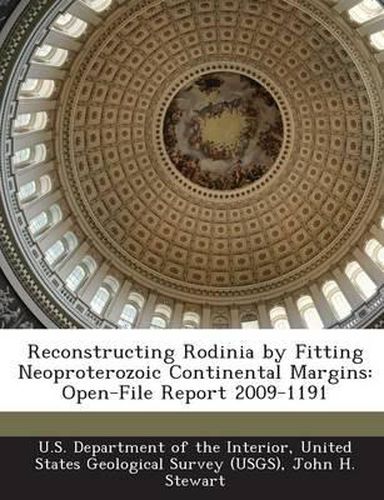Readings Newsletter
Become a Readings Member to make your shopping experience even easier.
Sign in or sign up for free!
You’re not far away from qualifying for FREE standard shipping within Australia
You’ve qualified for FREE standard shipping within Australia
The cart is loading…






Reconstructions of Phanerozoic tectonic plates can be closely constrained by lithologic correlations across conjugate margins by paleontologic information, by correlation of orogenic belts, by paleomagnetic location of continents, and by ocean floor magmatic stripes. In contrast, Proterozoic reconstructions are hindered by the lack of some of these tools or the lack of their precision. To overcome some of these difficulties, this report focuses on a different method of reconstruction, namely the use of the shape of continents to assemble the supercontinent of Rodinia, much like a jigsaw puzzle. Compared to the vast amount of information available for Phanerozoic systems, such a limited approach for Proterozoic rocks, may seem suspect. However, using the assembly of the southern continents (South America, Africa, India, Arabia, Antarctica, and Australia) as an example, a very tight fit of the continents is apparent and illustrates the power of the jigsaw puzzle method. This report focuses on Neoproterozoic rocks, which are shown on two new detailed geologic maps that constitute the backbone of the study. The report also describes the Neoproterozoic, but younger or older rocks are not discussed or not discussed in detail. The Neoproterozoic continents and continental margins are identified based on the distribution of continental-margin sedimentary and magmatic rocks that define the break-up margins of Rodinia. These Neoproterozoic continental exposures, as well as critical Neo- and Meso-Neoproterozoic tectonic features shown on the two new map compilations, are used to reconstruct the Mesoproterozoic supercontinent of Rodinia. This approach differs from the common approach of using fold belts to define structural features deemed important in the Rodinian reconstruction. Fold belts are difficult to date, and many are significantly younger than the time frame considered here (1,200 to 850 Ma). Identifying Neoproterozoic continental margins, which are primarily extensi
$9.00 standard shipping within Australia
FREE standard shipping within Australia for orders over $100.00
Express & International shipping calculated at checkout
Reconstructions of Phanerozoic tectonic plates can be closely constrained by lithologic correlations across conjugate margins by paleontologic information, by correlation of orogenic belts, by paleomagnetic location of continents, and by ocean floor magmatic stripes. In contrast, Proterozoic reconstructions are hindered by the lack of some of these tools or the lack of their precision. To overcome some of these difficulties, this report focuses on a different method of reconstruction, namely the use of the shape of continents to assemble the supercontinent of Rodinia, much like a jigsaw puzzle. Compared to the vast amount of information available for Phanerozoic systems, such a limited approach for Proterozoic rocks, may seem suspect. However, using the assembly of the southern continents (South America, Africa, India, Arabia, Antarctica, and Australia) as an example, a very tight fit of the continents is apparent and illustrates the power of the jigsaw puzzle method. This report focuses on Neoproterozoic rocks, which are shown on two new detailed geologic maps that constitute the backbone of the study. The report also describes the Neoproterozoic, but younger or older rocks are not discussed or not discussed in detail. The Neoproterozoic continents and continental margins are identified based on the distribution of continental-margin sedimentary and magmatic rocks that define the break-up margins of Rodinia. These Neoproterozoic continental exposures, as well as critical Neo- and Meso-Neoproterozoic tectonic features shown on the two new map compilations, are used to reconstruct the Mesoproterozoic supercontinent of Rodinia. This approach differs from the common approach of using fold belts to define structural features deemed important in the Rodinian reconstruction. Fold belts are difficult to date, and many are significantly younger than the time frame considered here (1,200 to 850 Ma). Identifying Neoproterozoic continental margins, which are primarily extensi